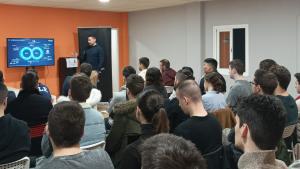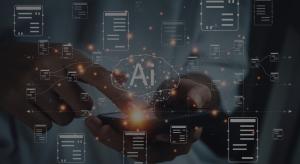Revolutionizing operations: how computer vision is transforming the manufacturing and logistics industries - Asset Display Page

Revolutionizing operations: how computer vision is transforming the manufacturing and logistics industries

Revolutionizing operations: how computer vision is transforming the manufacturing and logistics industries
December 17, 2024
In the era of hyper-competitiveness, visual data such as images and videos have evolved from static files to a key source of information in any organization’s growth strategy.
While this is an undeniable reality, the potential of such data remains underutilized in many industries. This is precisely where computer vision, an AI-based technology, is proving to be a game changer. By processing and analyzing visual data in real time, this technology is redefining industries such as manufacturing and logistics, with an impact that extends beyond operations to areas like sustainability, safety, and customer satisfaction.
Computer vision is more than just a technological tool; it is a paradigm shift in machines' ability to interpret the context of images and videos, providing visual analysis with unprecedented speed and precision. Unlike simple image processing, this technology not only recognizes objects but also extracts context, understands spatial relationships, predicts movements, and makes decisions based on what it "sees," utilizing advanced deep learning and artificial intelligence techniques.
Thanks to these capabilities, computer vision not only optimizes processes but also amplifies human decision-making, enabling quicker responses and more informed decisions. Its true value lies in transforming individual productivity, empowering professionals to process and analyze large volumes of visual data in mere seconds.
In the manufacturing sector, where companies face ever-growing demand, tighter delivery schedules, and increasingly stringent quality standards, errors can have significant consequences, from operational costs to reputational damage. This is where this technology proves essential for manufacturing plants and distribution centers.
With its ability to enhance safety in industrial environments, track vehicles in real time, monitor workers and equipment, and identify patterns or anomalous behaviors that could lead to accidents, companies can prevent incidents and ensure protocol compliance. For example, with advanced cameras and processing systems, computer vision can efficiently manage operational flows in large, crowded spaces, reducing downtime significantly and improving productivity.
One notable example of this technology’s application is Cemex, a leader in the construction and sustainability sector. In 2022, the company implemented a custom AI-based solution using neural networks. The results were remarkable: optimized material flows, reduced workplace accidents, and a significantly lower environmental impact.
What stands out most about this project is its scalability and adaptability. The solution processes data in the Cloud (remote processing on centralized servers), at the Edge (local processing on devices or systems near the data source), or centrally, depending on each plant's specific needs. This makes it a flexible solution, replicable across regions like the United States, Mexico, and the Dominican Republic.
The impact of computer vision goes beyond manufacturing. Its contribution to logistics is equally transformative, with vehicle management in plants and distribution centers taking a qualitative leap thanks to this technology. By combining cameras, Radio-Frequency Identification (RFID) systems, and QR codes, companies can track trucks and other assets in real time, optimizing loading and unloading processes, reducing operational costs, and improving customer experience.
At the same time, applications such as predictive maintenance and automated visual inspections are redefining how companies manage assets, reduce risks, and optimize costs. These advances highlight the role of this technology as a key driver of digital transformation across diverse industries, including manufacturing, logistics, retail, and even healthcare.
Computer vision also plays a crucial role in corporate sustainability. By reducing truck wait times, it helps lower CO₂ emissions and fuel costs, optimizing financial results and positioning companies as leaders in environmental responsibility. Its impact is further enhanced when integrated with emerging technologies like drones equipped with QR code scanners for inventory automation or augmented reality glasses that simplify warehouse picking tasks. These innovations boost productivity and enhance worker experience by minimizing errors, streamlining processes, and aligning operational efficiency with environmental and human objectives.
Companies increasingly recognize that sustainable practices are not just an ethical commitment but also a tangible competitive advantage. From reducing waste to minimizing emissions, computer vision helps organizations balance profitability and environmental responsibility.
Successfully implementing this technology goes beyond technical considerations and requires a deeper organizational cultural shift. Leaders must embrace a digital mindset, invest in training, and foster innovation as part of their corporate DNA. In an era where competitiveness depends on real-time data processing, this technology is not just relevant but indispensable. More than a tool, computer vision represents an opportunity to reimagine the future, and now is the perfect time for companies to embrace this change, adapt, and lead the transformation.
Read the full article here:
http://agenciaeluniversal.mx/productos/comunicado/11172
Featured
-
NEORIS achieves Spain's National Security Framework (ENS) Certification
January 14, 2025
-
Revolutionizing operations: how computer vision is transforming the manufacturing and logistics industries
December 17, 2024
-
Companies Don’t Always Make the Most of Their Networks
November 29, 2024
-
NEORIS Wins Bronze at the W!N 2024 Awards for We Are NEOS
November 19, 2024
Most viewed











